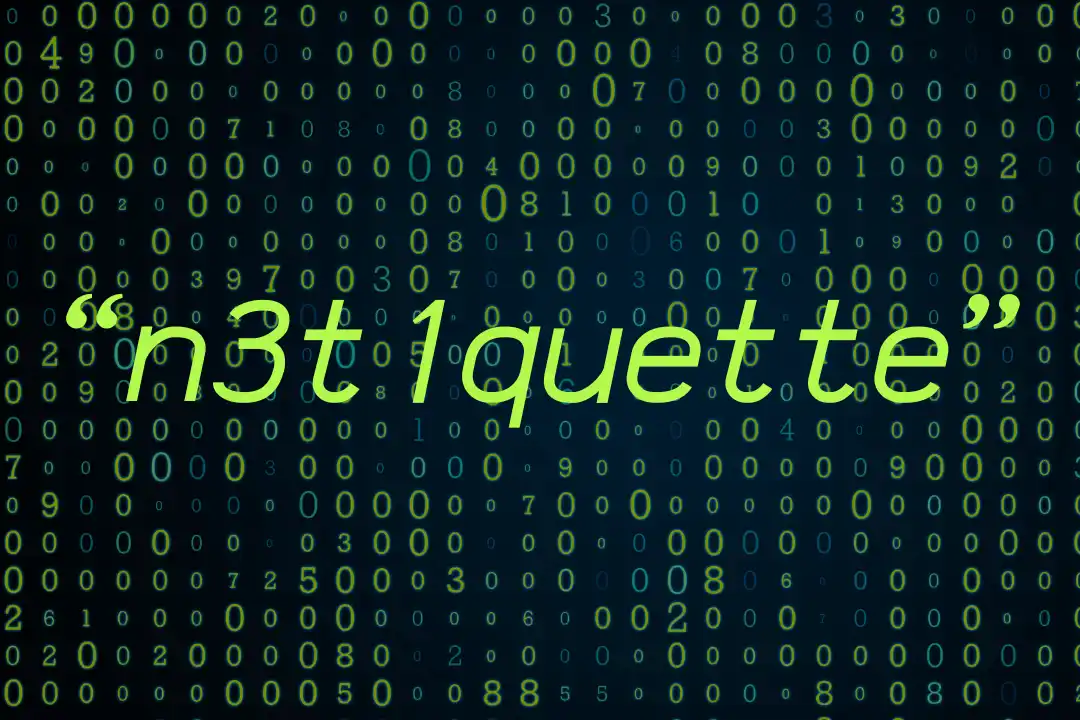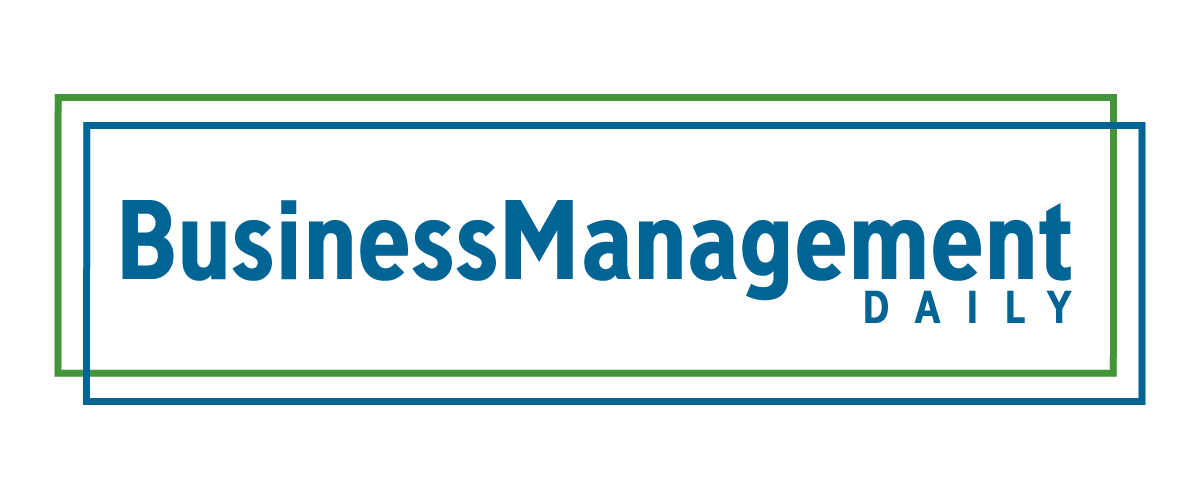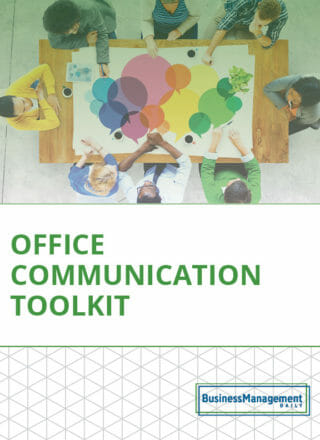Using Netiquette to improve workplace communication
 Why Netiquette matters in the workplace
Why Netiquette matters in the workplace
There’s a right way and a wrong way to communicate virtually. USING ALL CAPITAL LETTERS, for example, usually comes off as being upset. “Unnecessary scare quotes” hint at cryptic meanings too awkward to spell out, leaving others to guess what you mean.
Long, comma-heavy sentences, meant to convey everything that you and others like you might want to say, can quickly exhaust or confuse readers, preventing them from wanting to understand your message fully.
A social order of virtual communication known as netiquette—a portmanteau of network etiquette—differentiates real-world communication’s verbal and nonverbal cues from the text-/emoji-heavy styles used online.
More business happens over email and messaging apps than a decade ago, making screens the modern vehicle of nonverbal cues.
So why good netiquette? Like before, how you say something matters as much as what you say. This is your job—you must be on good terms with your coworkers and bosses if you want your day to go smoothly.
Netiquette is the unspoken set of rules that ensures everyone is on the same page regarding respect, understanding, and efficiency.
Where you find internet etiquette
Remember joking about videoconferencing with a business casual top and pajama bottoms? Dressing for Zoom calls is a good example of netiquette. With only the stingiest exceptions, most people couldn’t care less about what you do off-camera—ensure you fill the screen with professionalism and class.
What does professionalism and class look like? It starts with how you communicate:
- Don’t use offensive language or inappropriate humor
- Be a great listener and contributor
- Take your time to communicate clearly
- No edgy jokes or embarrassing digs at others
- Speak with confidence
- Show up on time and respond promptly
None of these netiquette best practices should come as a surprise. They’re basic expectations of the modern workplace, regardless of whether you work in person or online. However, virtual communications technology has introduced some weirdness that isn’t always easy to understand.
Did you get that memo?
There was a time when “You’ve got mail!” sent a thrilling dopamine rush to the pleasure centers. Checking email used to be fun and exciting, but those days are past.
Emails—especially work emails—aren’t all that fun. Many people silence their phone’s email notifications, hoping to reduce unnecessary stress. If you’re inclined to send an email that says “lol” or “awesome,” here’s a netiquette guideline: don’t.
Some workplaces have a “Reply All” culture, where the company expects everyone to reply all to companywide emails. In these cases, you may not have as much choice about replying.
The online etiquette of work emails, however, is still to be professional and productive:
- Use proper greetings and clear subject lines
- Reply promptly, even if only to confirm receipt—sometimes an okay is all a project needs to move forward
- State important info early and highlight relevant points so that readers can’t miss them
- Explain abbreviations the first time they are used
- Consider your audience so you don’t say anything stupid or inappropriate
- Never, ever write anything that compromises your relationship with a client or a boss, including criticism or jokes at their expense
This last bullet point is important: it’s a basic rule not to leave a paper trail of your negative opinions of someone. Not only could you accidentally send it to the wrong person, but doing so also implicates the recipient in whatever you say, whether or not they don’t agree.
Regarding work emails, pare it down to the basics and keep things simple.
The Slack channel
Group messaging apps can be fun. Slack, Microsoft Teams, Google Chat, and other programs have earned their place in modern work culture by providing fast, feature-rich tools for saying what you mean quickly.
You can joke around, send a photo, pile on the emojis (emoticons for us old folk), or start a chat room supporting specific needs without clogging up everybody’s inbox.
All of those are great ways to use a messaging app. However, you shouldn’t use them for personal stuff. Remember that HR teams monitor most messaging apps for content. They can be set up so supervisors are alerted if certain words are used, making watching what you say in private forums essential.
Here are some topics to avoid on the company messaging apps:
- Why your boss is an idiot
- How the company is wasting its time and money
- Next steps for forming a union
- Extensive discussions about a movie you saw
- Who’s the hottest new hire
Look, none of these topics are explicitly wrong to talk about per se, but using a company messaging app to host them can put you in a compromising situation. An off-color joke might get screenshotted and sent to HR. Your boss could walk up behind you while you’re badmouthing them.
If you must air a personal matter, send it from an encrypted text messaging app like Discord or Signal.
Can you hear me now?
The Zoom call is arguably the most used online communication tool of the 2020s. Where it used to be just some novel gizmo for catching up with friends and family, video conferencing today is an essential part of doing business. Interviews, conferences, one-on-ones, mentorships, and more can be hosted anywhere you can find wifi.
However, not every place with wifi is suitable for video calls.
Zoom’s noise filter can cut out sounds below a certain loudness threshold—stopping dishwasher and air conditioner noise from getting through—but any sounds at speech levels will go right into the meeting, which is frustrating to other attendees.
A core rule of Zoom netiquette is to limit background noise as much as possible by taking calls in quiet rooms or areas. If that’s impossible, mute your microphone (you may need time to locate the mute button).
Netiquette also asks that you engage with the meeting. Give an occasional nod or thumbs up to show you’re listening, as you would face-to-face.
Finally, dress professionally. It may not seem all that important, but sometimes professionalism means just doing stuff the way people have always done it.
Collaborating on work
How employees work together has changed significantly in the last decade. In-person collaborations happen far less frequently and are replaced with shared tools like documents, whiteboards, mind maps, and group chats.
Collaborating remotely has pros and cons, and not everyone likes it. However, you still have to participate and contribute. Here are some netiquette rules for collaborating:
- Avoid ruining your boss’s day by making copies of any documents you alter
- Use track changes on all your edits so they can be reversed if needed
- Make comments clear, concise, and to the point
- Don’t wait until the last minute to contribute—that means someone else has to work even later to implement changes
- It’s okay if people don’t use your suggestions
You may also encounter situations where others don’t have access to the same collaboration software you have. Be prepared to improvise, always focusing on making it as easy as possible.
Be nice
Cyberspace can feel like a lawless frontier. Content moderation is as good as dead, and privacy settings make it easy to hide your social media activity from prying eyes. You may think your secrets are adequately guarded, but remember: social media apps value engagement, even people’s privacy.
A few years ago, Facebook faced controversy when its servers allegedly reset global privacy settings to the default. This action resulted in all kinds of surprises. Users began to share information.
They thought this information was private. Consequently, this damaged relationships with real people. Furthermore, this shook confidence in data safety.
Posts, shares, comments—if the wrong thing makes it to the screen of your boss or client, you and your company’s reputation could take a huge hit.
Don’t talk bad about work on your social media. Yes, this infringes on your freedom, but it’s either that or finding a new job. Here are some other behaviors not to exhibit in online environments:
- Trolling
- Profanity
- Sexual advances
- Controversial politics
- Bullying in discussion forums
- Sharing personal information
- Mansplaining
Be especially careful with LinkedIn profiles. It’s debatable at this point how important LinkedIn is to one’s career, but it’s certainly a public representation of yourself. Posts there, as do comments and shares, require the highest adherence to the rules of etiquette.
Being your best self with netiquette
We’re all just trying our best. Some people are better at workplace professionalism than others, but everybody deserves a chance to be heard and understood. Good online behavior helps that happen.
At work, your highest priority is to let work flow. Therefore, you should clear away obstacles to communication. Additionally, avoid talk that spikes defenses.
Furthermore, learn to use workplace tools. Also, seek to understand the people you work with. If you prioritize your work above your insecurities, you will be fine. However, it can be a bit of a learning curve
Don’t be afraid to bring competency issues up with your coworkers. Most of them have been in your shoes and can not only help you but will be glad for an opportunity to get to know the real-life you better.
You don’t lose anything by being more fluent in the rules of netiquette.
More resources:
Workplace etiquette: The ultimate guide to professionalism ![]()
Remote work productivity: The verdict is in and it’s surprising ![]()
15 helpful collaboration tools for remote (or flexible) teams ![]()
Want more insights like these? Visit Dallin Nelson’s author page to explore his other articles and expertise in business management.




